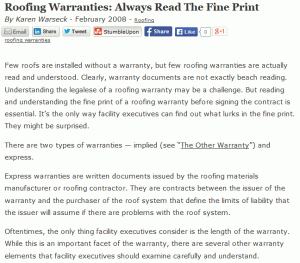Many Delaware roofing companies like Homecraft try to put warranties in layman’s terms, but these can still be prone to misinterpretation. Nearly everyone who have had their roof repaired at one point (or installed) probably asked how long their coverage would last. However, duration isn’t the only thing you should be asking.
It’s imperative to learn other aspects of insurance like the “what” of insurance. What exactly is covered within this specified period? How will roofers charge for the repair or installation job? Everything a homeowner needs to know about a specific warranty is in writing; it’s a matter of absorbing the information.
Coverage Explained
Brand new asphalt shingles don’t always mean their warranty provides a 50-year coverage. This is basically an oversimplification of matters.
The duration of warranties depend on the shingle line installed; one line may be covered up to 50 years (or even a lifetime), another line may only be guaranteed for 20 to 30 years. Keep in mind this is just the tip of the iceberg. Other factors such as wind speed that damaged the roof will also come into play in warranty assessment.
You can also expect prorated terms in roofing warranties. If a 30-year warranty on shingles has a non-prorated period of 15 years, coverage will start to shrink after Year 15. The non-prorated period can vary by warranty; some start to lose coverage after half the warranty period, others lose it as early as the first year. After all, by half the warranty period, the roof may show signs of wear.
Defects Only
Manufacturers don’t always include labor in warranties. If they do, it’s most likely a case of failed installations on their part.
Manufacturers usually don’t cover situations beyond their control such as erratic weather. There are hybrid warranties in the market that cover both materials and labor, but their complex terms warrant a professional to take a look at it first. Repairs of defects, in this case, are usually done by reputable Delaware roofing contractors.
(Article excerpt from “Roofing Warranties: Always Read The Fine Print,” Facilities Management, February 2008)











